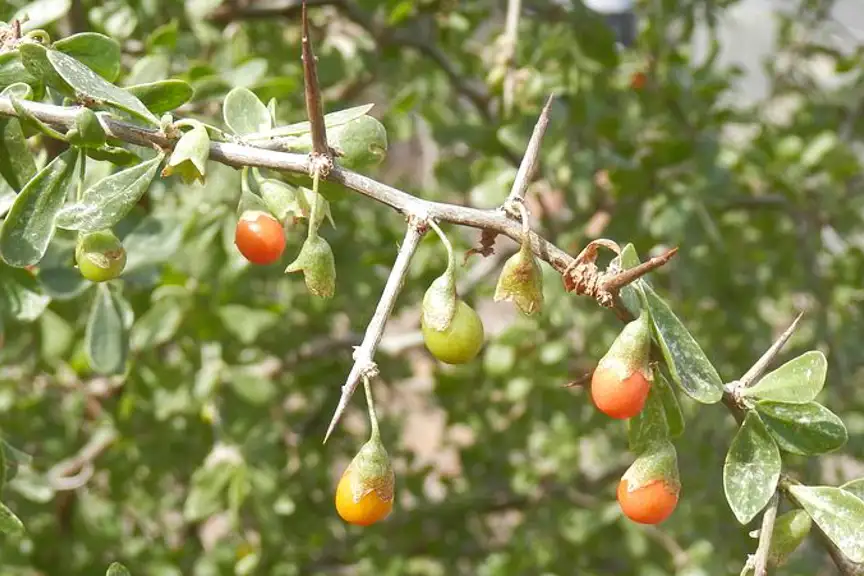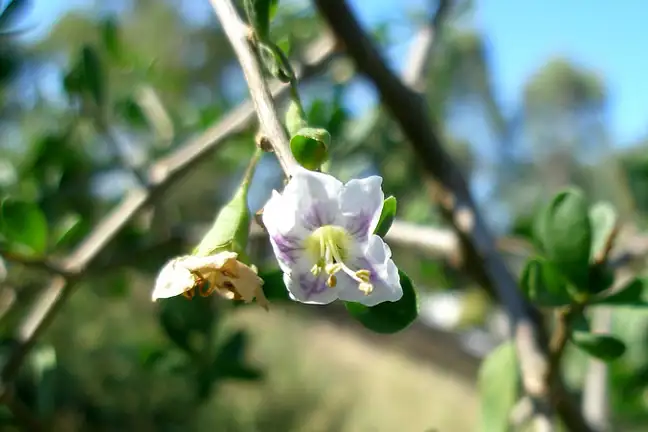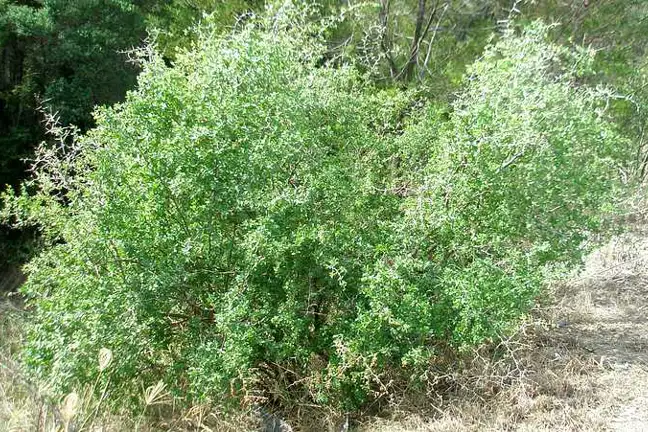African Boxthorn Control in Your Garden
Solanaceae : Lycium ferocissimum

Solanaceae : Lycium ferocissimum

As African boxthorn is a Weed of National Significance, all reasonable efforts must be taken to control the weed. To control African boxthorn, use Yates Tree & Blackberry Killer.
For seedlings (up to 5 cm diameter), apply Yates Tree & Blackberry Killer as a basal bark spray. Mix as directed and spray around the base of each stem to a height of 40 cm above ground level. For larger seedlings (more than 5 cm in basal diameter), use Yates Tree & Blackberry Killer as a cut stump treatment. Cut stems to within 15 cm of the ground and liberally apply the mix by spraying or painting on to the freshly cut surface.
Monitor treated areas regularly, paying attention to areas near dry creek beds. Treat at first sight of any new growth.
African boxthorn is a common and widespread weed of pastures and native bushlands. It is native to South Africa, but like many invasive weeds, it was introduced to Australia in the mid-1800s as an ornamental hedge, windbreak, and physical barrier to help limit stock movement on pastoral land. However, it soon spread into neighbouring areas, forming dense, impenetrable thickets that completely excluded vegetation, stock and human movement. Due to its invasive nature and impact on native vegetation and grazing areas, it is a declared Weed of National Significance.
African boxthorn is a perennial or semi-deciduous shrub that typically grows 2-3 m tall and 3 m wide. Occasionally, it may reach 5-6 m in height. The stems are covered in large thorns or spines 2-15 cm long, with smaller spines clustered at the ends of branches. The leaves are small (1-4 cm), bright-green, and fleshy. They're oval with a flattened tip and arranged in clusters along the stem. Tubular white or pale lilac flowers with dark purple markings appear from spring to summer but can often be found sporadically flowering at various times throughout the year. Flowers occur singularly or in pairs and appear in the forks of leaves. The flowers hang down and petals are recurved, so the stamens – the long slender stalks topped with pollen – protrude and feature prominently from the centre of the flower.

Small, round, green berries appear shortly after and eventually mature to a bright orange or red. The berries are filled with 20-70 flattened, oval-shaped seeds that are easily dispersed by birds and other animals when they consume the berries and excrete the seeds. Each shrub has the potential to produce hundreds of berries and therefore, thousands of seeds. The seeds will readily germinate with adequate moisture and are quick to establish a deep, extensive root system, outcompeting any young native vegetation. Plants are at least two years old before they reach reproductive maturity.
African boxthorn is prevalent throughout Australia but is particularly rampant in Victoria and South Australia. It spreads mostly via seed, but its roots sucker extensively too, especially when disturbed or broken. African boxthorn grows on all soil types, although it prefers light soils, particularly along dry creek beds. As it grows into dense stands, African boxthorn is often the home of rodent pests, such as rabbits and foxes. Insect pests, such as fruit fly can also breed in the fruit.
In areas where African boxthorn has completely altered and excluded existing vegetation, its dense thickets have become the refuge and home for various native animals. A revegetation plan should be considered to assist with rehoming the displaced wildlife once the African boxthorn is eradicated. Consult your local council or Department of Primary Industries for more information.
All parts of the plant are poisonous to humans, and can cause discomfort, nausea and vomiting if consumed. While not known to be toxic to livestock, they rarely graze on it due the large spines.
